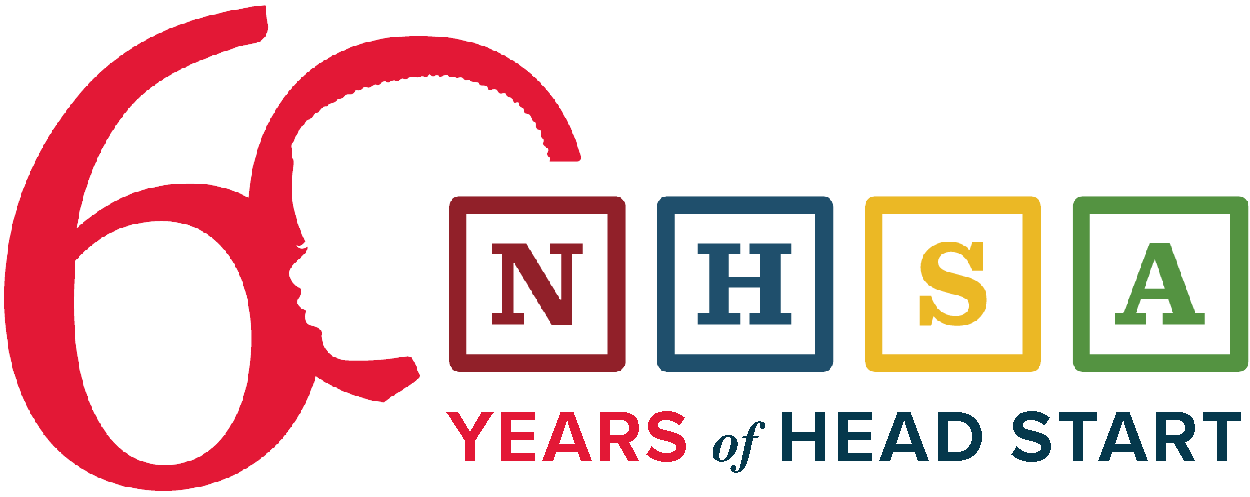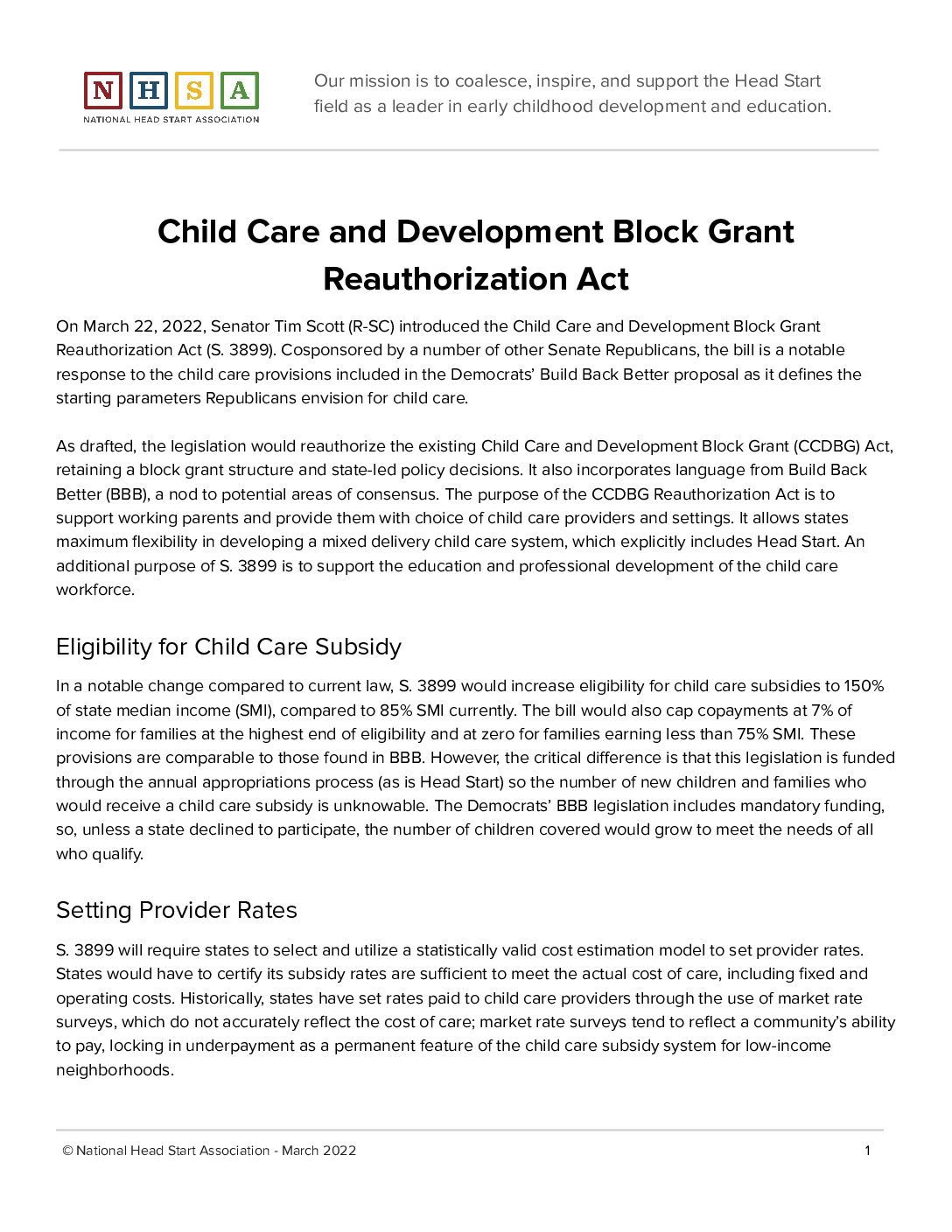On March 22, 2022, Senator Tim Scott (R-SC) introduced the Child Care and Development Block Grant Reauthorization Act (S.3899). Cosponsored by a number of other Senate Republicans, the bill is a notable response to the child care provisions included in the Democrats’ Build Back Better proposal as it defines the starting parameters Republicans envision for child care. As drafted, the legislation would reauthorize the existing Child Care and Development Block Grant (CCDBG) Act, retaining a block grant structure and state-led policy decisions. It also incorporates language from Build Back Better (BBB), a nod to potential areas of consensus.
The purpose of the CCDBG Reauthorization Act is to support working parents and provide them with choice of child care providers and settings. It allows states maximum flexibility in developing a mixed delivery child care system, which explicitly includes Head Start. An additional purpose of S.3899 is to support the education and professional development of the child care workforce.
Eligibility for Child Care Subsidy
In a notable change compared to current law, S.3899 would increase eligibility for child care subsidies to 150% of state median income (SMI), compared to 85% SMI currently. The bill would also cap copayments at 7% of income for families at the highest end of eligibility and at zero for families earning less than 75% SMI. These provisions are comparable to those found in BBB. However, the critical difference is that this legislation is funded through the annual appropriations process (as is Head Start) so the number of new children and families who would receive a child care subsidy is unknowable. The Democrats’ BBB legislation includes mandatory funding, so, unless a state declined to participate, the number of children covered would grow to meet the needs of all who qualify.
Setting Provider Rates
S.3899 will require states to select and utilize a statistically valid cost estimation model to set provider rates. States would have to certify its subsidy rates are sufficient to meet the actual cost of care, including fixed and operating costs. Historically, states have set rates paid to child care providers through the use of market rate surveys, which do not accurately reflect the cost of care; market rate surveys tend to reflect a community’s ability to pay, locking in underpayment as a permanent feature of the child care subsidy system for low-income neighborhoods.
Professional Development for Teachers
The bill includes additional potential activities that states can choose to include in their state plans pertaining to professional development, such as support for staff attaining higher education credentials, apprenticeship programs, and other pathways to career advancement.
New Grants to Boost Supply and Facilities
The legislation includes new Child Care Supply and Facilities Grants for fiscal years 2023-25 to expand the supply and capacity of child care providers and help increase parent choice, as well as provide potential funding for facilities. As with the other sections of this bill, the new grants would have to be funded through the appropriations process.
What about Head Start?
As drafted, the legislation includes Head Start as an eligible mixed delivery partner. However, it does not create federal quality standards based on Head Start as found in Build Back Better’s child care title. Instead the bill is largely consistent with current law references to Head Start in the CCDBG Act.

